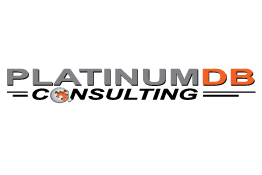SAP Cloud Connector
Filter By
Browse By
- SAP Analytics and AI
- SAP Application Development and Integration
- All SAP Application Development and Integration
- SAP ABAP
- SAP ABAP Development Tools
- SAP ABAP Test Cockpit
- SAP API Management
- SAP BAPI
- SAP Basis
- SAP BRF
- SAP Business Application Studio
- SAP CMS
- SAP Design Studio
- SAP Development Tools
- SAP DevOps
- SAP EAI
- SAP EDI
- SAP Extension Suite
- SAP Fiori
- SAP Fiori Elements
- SAP Integration Suite
- SAP Low Code Application Development
- SAP Low Code Automation
- SAP Netweaver
- SAP Release Management
- SAP UI5
- SAP Web Application Server
- SAP Web IDE
- SAP Business Process Management
- SAP Center of Excellence
- SAP CIO
- SAP Customer Experience
- SAP Data and Data Management
- All SAP Data and Data Management
- SAP BW
- SAP BW/4HANA
- SAP Crystal Reports
- SAP Data Archiving
- SAP Data Center
- SAP Data Governance
- SAP Data Integration
- SAP Data Migration
- SAP Data Quality
- SAP Data Services
- SAP Data Strategy
- SAP Data Visualization
- SAP Data Warehouse Cloud
- SAP DMS
- SAP Document Control
- SAP EIM
- SAP ETL
- SAP ETL Tools
- SAP HANA
- SAP HANA Administration
- SAP HANA Deployment Infrastructure
- SAP HANA Studio
- SAP Master Data
- SAP Master Data Governance
- SAP MDM
- SAP Enterprise Architect
- SAP Enterprise Asset Management
- SAP ERP
- SAP Finance
- All SAP Finance
- SAP Accounting
- SAP AR AP
- SAP Asset Accounting
- SAP Billing Systems
- SAP BPC
- SAP BRIM
- SAP Cash Management
- SAP Central Finance
- SAP Controlling
- SAP COPA
- SAP Cost Center Accounting
- SAP Currency Risk
- SAP e-invoicing
- SAP FICO
- SAP Finance Automation
- SAP Advanced Financial Closing
- SAP Financial Consolidation
- SAP Financial Planning
- SAP FX Risk
- SAP General Ledger
- SAP Global Tax Management
- SAP Hyperion
- SAP Order to Cash
- SAP Payment Processing
- SAP Profitability Analysis
- SAP Rebate Management
- SAP S/4HANA Finance
- SAP SWIFT Compliance
- SAP Treasury Management
- SAP Universal Journal
- SAP Governance Risk and Compliance
- SAP Human Capital Management
- SAP Intelligent Technologies
- SAP Platform and Technology
- All SAP Platform and Technology
- SAP Business Technology Platform
- SAP Cloud
- SAP Cloud Connector
- SAP Cloud Integration Platform
- SAP Cloud Migration
- SAP Cloud Platform
- SAP Cloud Providers
- SAP Cloud Strategy
- SAP Digital Signature
- SAP Container Platform
- SAP HANA Enterprise Cloud
- SAP Digital Asset Management
- SAP Smart Forms
- SAP HEC
- SAP Digital Integration Hub
- SAP Hyperscalers
- SAP Infrastructure
- SAP Messaging
- SAP Quality and Testing
- SAP Security
- SAP Spend Management
- SAP Supply Chain Management
- All SAP Supply Chain Management
- SAP APO
- SAP Asset Management
- SAP Business Network
- SAP Digital Manufacturing Cloud
- SAP Digital Twin
- SAP EWM
- SAP IBP
- SAP Inventory Management
- SAP Label Printing
- SAP Logistics
- SAP Manufacturing
- SAP Manufacturing Automation
- SAP MES
- SAP MII
- SAP MM
- SAP MRO
- SAP MRP
- SAP Order Management
- SAP Plant Maintenance
- SAP PLM
- SAP Production Planning
- SAP S&OP
- SAP SD
- SAP SPM
- SAP Supply Chain Planning
- SAP Track and Trace
- SAP Transportation Management
- SAP System Administration
What Is the SAP Cloud Connector?
The SAP Cloud Connector is an application that can be installed on a Windows, Linux, or Mac OS environment, which provides a secure connection to the SAP cloud. This allows SAP cloud solutions to communicate securely with systems that are running on-premise, in a private cloud landscape, or an infrastructure-as-a-service environment. This is important for data security as it ensures that these systems do not have to directly be connected to the internet in order to communicate with applications running in an environment, such as the SAP Business Technology Platform (BTP).
What Is the SAP Cloud Connector?
The SAP Cloud Connector is an application that can be installed on a Windows, Linux, or Mac OS environment, which provides a secure connection to the SAP cloud. This allows SAP cloud solutions to communicate securely with systems that are running on-premise, in a private cloud landscape, or an infrastructure-as-a-service environment. This is important for data security as it ensures that these systems do not have to directly be connected to the internet in order to communicate with applications running in an environment, such as the SAP Business Technology Platform (BTP).
The SAP Cloud Connector can be installed on either a physical or virtual machine. An SAP BTP account is needed to configure the connection between the cloud environment and the Cloud Connector instance. Multiple Cloud Connectors can be deployed to connect to one or more SAP BTP regions or subaccounts depending on your landscape and needs. The SAP Cloud Connector can help achieve functionality, such as extending on-premise applications, allowing communication between cloud-based applications and on-premise systems, integrating on-premise systems with cloud applications, moving data from internal to cloud-based systems, and reporting on internal data using cloud-based applications.
Key Considerations for SAPinsiders
- Use the SAP Cloud Connector to securely connect local systems with cloud-based applications.The SAP Business Technology Platform is the foundation for creating and extending your SAP applications in the cloud. But many organizations are looking to leverage data that isn’t yet available in the cloud. The SAP Cloud Connector offers a means of doing this securely. This article by Paul Modderman explains how you can leverage the cloud connector to ensure that the work that you are doing in the cloud is securely accessing your local data, and allow that information to be accessed and used in the cloud.
- The SAP Cloud Connector is the first step that you should take when extending your SAP applications. SAP encourages customers to use the SAP Extension Suite and SAP Business Technology Platform as the basis for extending their SAP applications. Whether this is extensions for SAP S/4HANA or a new application that uses the SAP BTP, ABAP environment and data from SAP HANA, the first step that this application typically needs is to connect to existing business data and processes. Martin Grasshoff explains in this article how to build that application using SAP Extension Suite, leveraging a connection to your existing data.
865 results
-

 Premium
Premium
How to Detect BPC Risk in SAP Access Control
Reading time: 17 mins
Discover how to detect cross-system risk between SAP ERP and SAP Business Planning and Consolidation (BPC). See how BPC task profiles map to business functions and understand how to create cross-system connector groups and assign appropriate connectors to that group. Key Concept Cross-system groups logically define what connectors are involved in cross-system risk analysis. Task...…
-

- SAP Talent Management
 Premium
Premium
Solving Training Administration Challenges by Setting Up Organizational Units and Job Structures in SAP SuccessFactors Learning
Reading time: 8 mins
Learn how setting up organizational units and job codes can help overcome some of the common SAP SuccessFactors Learning administration challenges. Use these simple steps to implement organizational units and job structures in the SAP SuccessFactors Learning Management System (LMS) module. Key Concept Organization IDs and job codes, when associated with user and training information,...…
-

Solving Training Administration Challenges by Setting Up Organizational and Job Structures in SAP SuccessFactors Learning
Reading time: 6 mins
Learn how setting up organizational units and job codes can help overcome some of the common SAP SuccessFactors Learning administration challenges. Use these simple steps to implement organizational units and job structures in the SAP SuccessFactors Learning Management System (LMS) module. Membership Required You must be a member to access this content.View Membership LevelsAlready a…
-
-

 Premium
Premium
Don’t Overlook CRM Embedded Search
Reading time: 14 mins
Essential information about customers, products, and services cannot always be accessed quickly and isn’t always searchable. See how SAP Embedded Search helps you query and find business information more efficiently in your SAP CRM system. Key Concept Embedded Search (also called simple search) is a standard SAP CRM functionality available as of SAP CRM version...…
-

- SAP Fiori Elements
 Premium
Premium
Easily Create and Extend Fiori Applications with the New SAP Web IDE
Reading time: 13 mins
Sarah Lottman shows how to configure the new SAP Web Integrated Development Environment (SAP Web IDE) and connect it to your on-premise systems using HANA Cloud Connector. Key Concept SAP Web Integrated Development Environment (Web IDE) was formerly known as the River Rapid Development Environment (River RDE). It is a browser-based development platform that contains...…
-

 Premium
Premium
Integrate SAP Access Control 10.0 with SAP ERP Human Capital Management
Reading time: 16 mins
SAP Access Control 10.0 comes with a feature called HR Trigger. It can create a request automatically in the Access Request Management module owing to the changes in different fields (infotype and subtype) of SAP ERP Human Capital Management (SAP ERP HCM). Learn how to:• Configure SAP Access Control 10.0 to integrate with SAP ERP...…
-

ABAP Development in the Cloud
Reading time: 29 mins
Thank you for registering to read the discussion transcript on taking advantage of the newest ABAP innovations, enterprise-grade SAP Cloud Platform business and application services, and the power of the SAP HANA business data platform to build breakthrough business applications in the cloud. Please find the transcript below. Matthew Shea: Hello, and welcome to our...…
-
-

 Premium
Premium
How to Simplify the Data Sources and Business Rules Logistics Process in SAP Process Control 10.1
Reading time: 14 mins
Kehinde Eseyin shows you how to use standard tools for the data sources and business rules logistics process in SAP Process Control 10.1. Key Concept Data source refers to the data to be monitored, including how and from where it is obtained. It can be associated with one or more business rules and supports search...…
-

 Premium
Premium
Options to Manage Connector Configuration in SAP BusinessObjects GRC 10.0
Reading time: 7 mins
Sergei Peleshuk provides an overview of SAP BW/4HANA and key considerations to think about when making the decision to migrate. Membership Required You must be a member to access this content.View Membership LevelsAlready a member? Log in here
-

- SAP Audit Management
 Premium
Premium
Drive Risk-Based Auditing in the SAP Audit Management System
Reading time: 33 mins
Learn how to configure SAP Audit Management to harness the benefits of risk-based auditing while integrating the system with SAP Process Control and SAP Risk Management. Key Concept SAP Audit Management is part of SAP Assurance and Compliance Software (powered by SAP HANA) that provides enterprises with an end-to-end audit management solution. The product is...…
Become a Member
Unlimited access to thousands of resources for SAP-specific expertise that can only be found here.
Become a Partner
Access exclusive SAP insights, expert marketing strategies, and high-value services including research reports, webinars, and buyers' guides, all designed to boost your campaign ROI by up to 50% within the SAP ecosystem.
Upcoming Events
Related Vendors
Your request has been successfully sent


